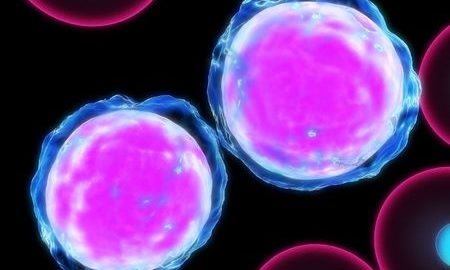Researchers Discover Why Leukemia Relapses

A group of researchers in Canada, led by Dr. John Dick at the University of Toronto, have discovered the reason for the mysterious relapse of acute myeloid leukemia (AML) in some patients. The findings provide insight into why certain patients are fated to relapse while others achieve remission with standard chemotherapy.
Acute Myeloid Leukemia
AML is a type of blood cancer in which there is unchecked growth in the number of white blood cells. AML cannot be cured, but it can be treated. This type of cancer is “acute,” i.e., it spreads quickly and can be life-threatening. AML affects every individual differently. The outlook is better in people who are younger than 60 and have a relatively lower white blood cell count at the time of diagnosis. AML is more common in males than females. Known risk factors include smoking and exposure to certain chemicals, chemotherapy drugs, and high-dose radiation therapy.
Some patients are able to achieve complete remission (disappearance of cancer) with treatment. Others mysteriously relapse following standard treatment. Now, scientists have discovered that stem cells may be responsible for refractory acute myeloid leukemia.
Therapy-Resistant Stem Cells
The group in Canada has discovered rare stem cells that are resistant to therapy for AML. These stem cells are present in some patients before chemotherapy begins. In fact, two distinct populations of stem cells have been identified which give rise to relapse in some patients. The researchers hope their findings, which were published in the journal Nature, will help in the development of new targeted therapies for AML.
Genetics and Stem Cell Biology
Interestingly, the findings show that genetics and stem cell biology, two areas that are traditionally studied separately, are intimately related. Certain mutations in stem cells play a critical role in patients with AML, explains Dr. Dick, who has been a pioneering researcher in the field of cancer stem cells since the 1990s. A decade ago, Dr. Dick undertook research where normal human blood cells were infected with oncogenes and transplanted into mice. The scientists then minutely observed the development of leukemia in the mice, a discovery that has guided all subsequent leukemia research.
Stem Cells and Leukemia Treatment
The team led by Dr. Dick analyzed pairs of blood samples from patients taken before and after treatment and studied the differences. Detailed genome sequencing and genetic analysis were carried out to study the DNA at the time of diagnosis and at the time of relapse. The idea was to identify the cells that had changed and potentially led to the relapse. This approach revealed some cells were present only at relapse. The team then sifted through normal and leukemic stem cells and zeroed in on the ones that were fated to relapse.
Deep sequencing of DNA has made these experiments possible, says Dr. Dick. Five years ago, we didn’t have the technology to conduct this type of research. In terms of clinical application, the team has developed a stemness marker, a type of gene signature that is based on leukemia stem cells. This marker is used to predict whether a patient diagnosed with AML will respond to standard therapy.
The team hopes to soon develop a biomarker that will tell whether rare leukemia stem cells are making a comeback in a patient who is in remission from AML. This will help doctors target chemotherapy and hopefully improve outcomes for such patients. At present, the approach is one-size-fits-all. The ability to identify patients upfront (at the time of diagnosis or during remission) who are fated to relapse with standard treatment will be priceless in AML treatment.
References:
- https://newswise.com/articles/stem-cell-researchers-solve-mystery-of-relapse-in-acute-myeloid-leukemia
- http://www.webmd.com/cancer/lymphoma/acute-myeloid-leukemia-symptoms-treatments


